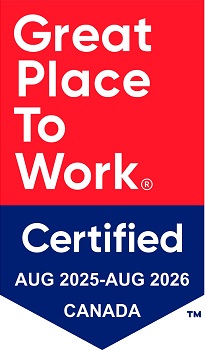
There’s a saying about lawyers that doesn’t exactly bode well for retirement planning: “Most lawyers live well, work hard and die poor.” And there’s more of that middle part — the working part — for lawyers than for most.
The average retirement age in Canada is 63.6*. But according to the Federation of Law Societies in Canada, the average lawyer retires more than a decade later—at age 75.
A later retirement isn’t the only way to quell the biggest retirement fear: the fear of outliving your savings. No matter when you plan to retire, here are five steps to help you prepare for life after work.
Step 1. Visualize your retirement
Set out a plan for where you’ll live and what you’ll do through various stages of your life 2.0. For example, do you plan on staying in your current home or will you downsize to a smaller place, and if so, when? Do you plan on travelling? Will you spend part of your time in another country? Will you work part-time? What sort of leisure activities will you do? How will you deal with health concerns if they arise?
Based on the above, you can get a rough idea of your projected expenses.
Step 2. Calculate your expenses and build in an adequate cushion
Once you have an idea of how you want to enjoy retirement, you can start putting numbers together - what your costs will be and how much income you’ll have to cover them. When you do this exercise, build in a cushion.
Most people underestimate how long they’ll live and how much money they’ll need for basic living expenses. The average lifespan for Canadians is 80-84 years and most people need 70-80% of their peak income to fund their lifestyle. There will be inflation to consider. Large one-time expenses will come up: a new car, appliances, a roof that sags in the middle. Taxes will likely increase. And you’ll eventually have to factor in medical and long-term care costs.
Step 3. Review your investment portfolio and adjust if necessary
Analyze your investments at least eight years before you plan to retire to make sure they’re set up to help you build your nest-egg. If you find you have some catching up to do, you still have time to modify your portfolio and adjust your lifestyle to put away more savings.
For example, can you trim variable costs (like groceries or vacations) to free up funds to invest or save? Can you invest in quality growth stocks that provide better potential returns? Are you able to top up company pension plans or take advantage of matching programs through your employer? Are you able to take advantage of tax-sheltered RRSPs and TFSAs to help you build your wealth more effectively?
Take a proactive approach as early as possible. If you try to make up for shortfalls later, you might be tempted to take on excessive investment risk.
Step 4. Review tax saving strategies
Registered Retirement Savings Plans (RRSPs) and Tax-Free Savings Accounts (TFSAs) are investment accounts that help you save or defer tax payments. However, RRSPs have greater tax consequences in your retirement years and may trigger a clawback on the amount of government pension plans you receive, including Old Age Security.
Compare the wealth-building potential of your RRSP with your other sources of retirement income. This will tell you if there are more tax-efficient ways to save and spend—like using your TFSAs more, splitting your income through a spousal RRSP, or planning your RRIF withdrawals to minimize the impact at tax time.
Step 5. Consider delaying your CPP payments
Very few Canadians choose to delay their Canada Pension Plan benefits in case they die early. But if you’re relatively healthy and have other sources of income to “bridge” your retirement spending, there’s a strong case for delaying CPP.
Your annual payment is reduced by 7.2% for every year you take your CPP before the age of 65. That’s a 36% loss if you take it at 60. Conversely, retirees who delay their benefits past age 65 receive an increase in payments of 8.4% a year. That’s a 42% total increase if you hold off until you’re 70. In dollar figures, delaying your payment can mean the difference between approximately $1,100 per month and $1,600 per month (at the higher end).
If you believe your investments can earn enough to offset that 7.2% annual loss, you may decide to take your benefits earlier. However, in today’s low interest rate environment and with a lower risk appetite in retirement, the incentive to delay the benefit CPP is tough to beat.
Many developments can impact your finances during retirement. But with a little preparation—and a check-in with a financial advisor—you can live well, stop working and retire comfortably.
Talk to an advisor to make sure you’re ready for life after work.
By Saijal Patel, financial-wellness advocate and founder of Saij Elle.
September 28, 2021
*Source: 1. Statistics Canada, “Retirement age by class of worker.” January 2021


